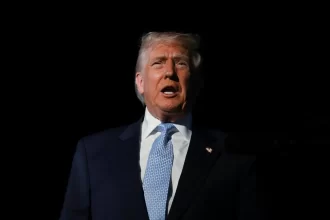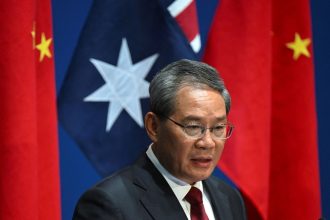New Delhi: Union Home Minister Amit Shah on Tuesday introduced a comprehensive strategy to combat cybercrime, unveiling the government’s 4Cs—Convergence, Coordination, Communication, and Capacity—and 3As—AI, Awareness, and Action. This initiative aims to fortify India’s digital infrastructure and protect cyberspace, which comprises three key elements: software, services, and users.
Chairing the Parliamentary Consultative Committee on Cyber Security and Cyber Crime, Shah underscored the urgent need to tackle cyber threats through a well-coordinated approach. “To combat cybercrime effectively, we have adopted four strategic pillars—Convergence, Coordination, Communication, and Capacity. Each is being implemented with clear objectives and a structured roadmap,” he said.
India’s Expanding Digital Footprint and Rising Cyber Threats
Shah highlighted India’s rapid digital transformation, stating that 95% of villages are now digitally connected, with one lakh gram panchayats equipped with Wi-Fi hotspots. Over the past decade, India has witnessed a digital revolution, with internet users growing 4.5 times. In 2024 alone, 246 trillion UPI transactions worth ₹17.221 lakh crore took place, accounting for 48% of global digital transactions.
As India emerges as the third-largest digital economy, contributing ₹32 lakh crore (12%) to GDP in 2023 and creating 15 million jobs, Shah acknowledged that the surge in digital activity has also led to an increase in cyber threats. “Cybercrime has erased geographical boundaries—it is borderless and formless. We must recognize its scale to effectively counter it,” he added.
Strengthening Cybersecurity: A Multi-Faceted Approach
Under Prime Minister Narendra Modi’s leadership, the Ministry of Home Affairs (MHA) has taken major steps to safeguard India’s cyberspace. Shah emphasized the importance of inter-ministerial and inter-departmental collaboration, ensuring seamless coordination between MHA, the Ministry of Electronics and IT, CERT-IN, I4C, and key sectors like Telecom and Banking.
A key focus is on AI-powered detection systems to curb financial fraud. The government is working with the Reserve Bank of India and financial institutions to identify and deactivate mule accounts before they can be misused.
To raise public awareness, Shah urged committee members to promote the I4C cybercrime helpline ‘1930’, a single-point solution for fraud prevention, including blocking suspicious transactions. The government is also pushing PM Modi’s “Stop, Think, Take Action” campaign to make citizens more vigilant against cyber threats.
Achievements in Cybercrime Prevention
Shah revealed significant milestones achieved through the I4C initiative:
- 1.43 lakh FIRs registered on the I4C portal
- 19 crore users have accessed the platform
- 805 apps and 3,266 website links blocked for national security reasons
- 399 banks and financial intermediaries onboarded
- Over 6 lakh suspicious data points shared and 19 lakh mule accounts identified
- ₹2,038 crore in fraudulent transactions prevented
Additionally, Cyber Crime Forensic Training Laboratories have been set up in 33 states and union territories, and the CyTrain MOOC platform has trained over 101,561 police officers, issuing 78,000+ certificates.
A Commitment to a Cyber-Safe India
The meeting, attended by Union Minister of State for Home Affairs Nityanand Rai, Bandi Sanjay Kumar, senior officials, and committee members, saw extensive discussions on cyber security challenges. Members appreciated the government’s proactive measures and provided further recommendations.
With a holistic strategy encompassing technological innovation, capacity-building, and public awareness, India is poised to become a global leader in cybersecurity. “Our goal is clear—zero cybercrime cases and swift resolution of FIRs,” Shah concluded.








